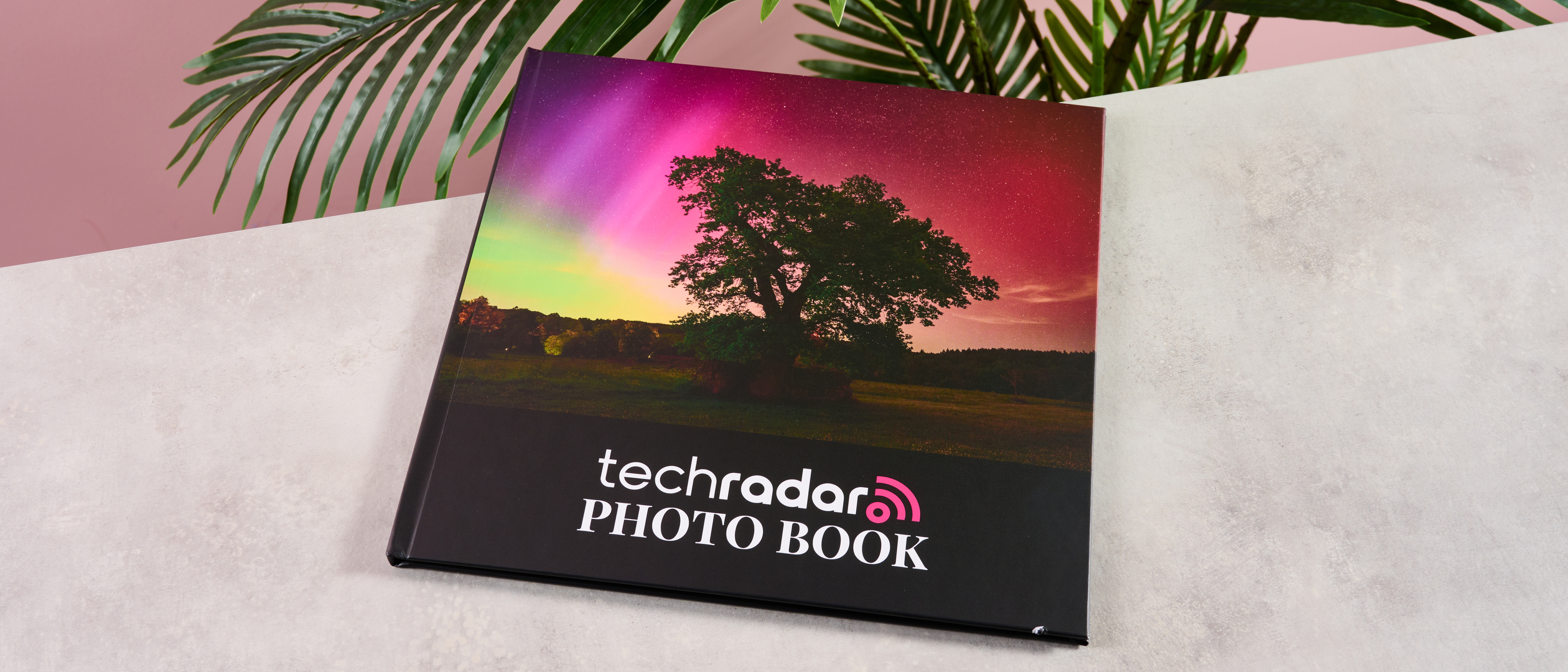TechRadar Verdict
It’s hard to find fault with Blurb’s photo book service. The design options available to you are first-class: whether you're using professional software like Adobe InDesign or Blurb’s own BookWright app, it’s easy to create detailed, accurate layouts. Finished photo books are high-resolution, vibrantly colored, and almost entirely error free. And it's one of the cheapest options out there, making Blurb a great option for a gift or as a way to preserve treasured memories.
Pros
- +
Precise, flexible design tools
- +
High-quality final product
- +
Very affordably priced
Cons
- -
Slight damage to delivered book
- -
No drag and drop illustrations
- -
Only offers app-based design tool
Why you can trust TechRadar
Blurb photo book review: specs
Layouts | 188 |
Cover options | Soft | ImageWrap Hard | Dust Jacket Hard |
Paper options | Standard | Premium Lustre | Premium Matte | Mohawk Superfine Eggshell | Mohawk proPhoto Pearl |
Sizes | Landscape (2 options) | Square (3 options) | Portrait (1 option) |
App | Yes |
Sustainable Practice | No |
Standard Delivery | 14 days |
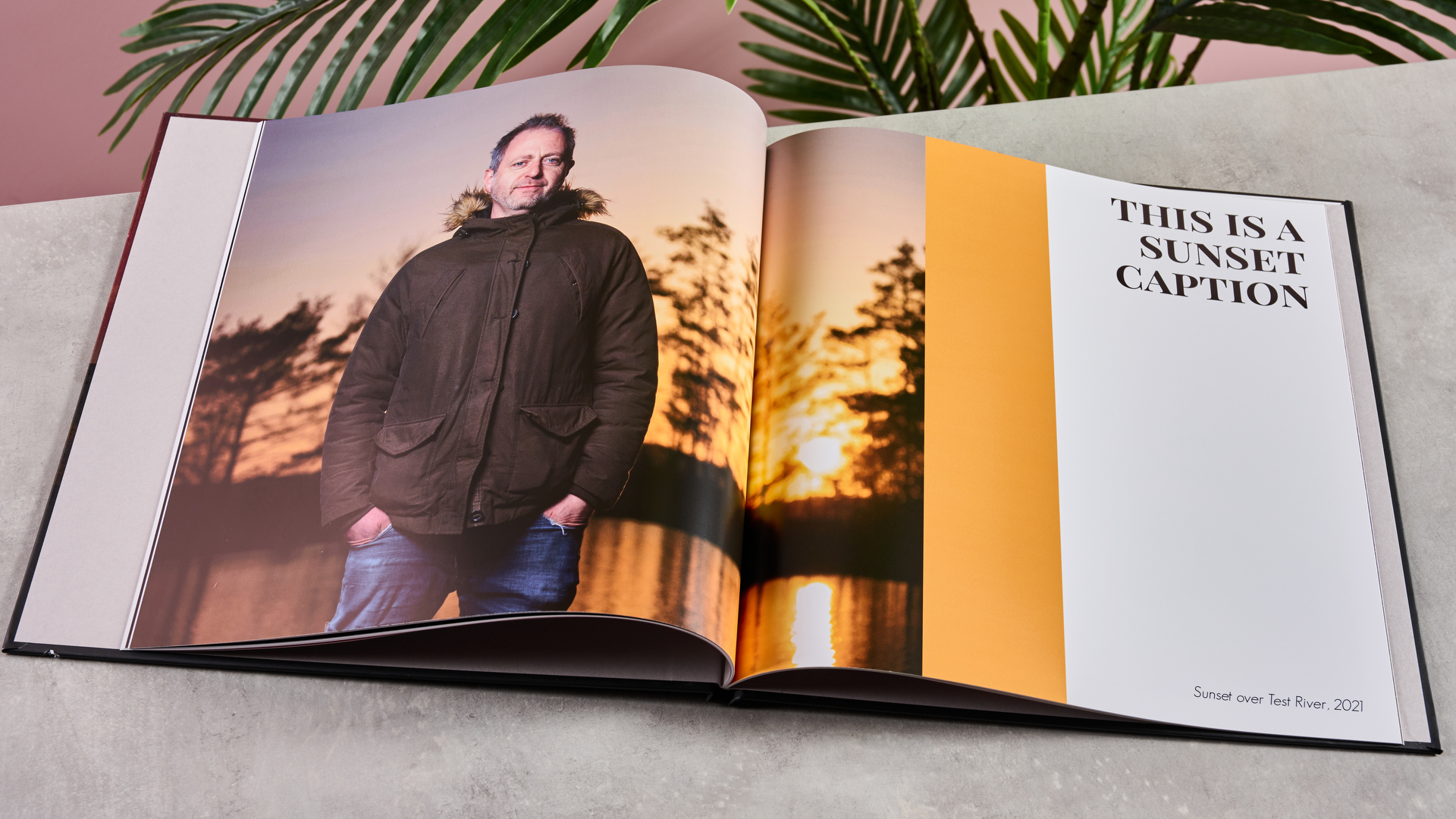
Blurb photo book: review
Blurb is an affordable printing service that allows you to produce your own high-quality photo books. Offering a wide range of sizes, from a Lilliputian 13 x 13cm to a colossal 33 x 28cm, five kinds of paper stock and three cover options, it offers a huge range of products. And unlike many photo book services, you can design books in a variety of ways, using professional design tools like Adobe InDesign or Lightroom or Blurb's bespoke software, BookWright.
For those who fancy creating a photo book without the fuss, Blurb’s BookWright software has plenty of options. You can let it do all the work: just upload your photos, click the ‘Save Me Time’ button and it will automatically place your photos on the page. However, I did find when trying this feature out that BookWright defaulted to displaying a single full-size image per page, so you’ll likely only want to use this as a starting point.
Helpfully, there’s another option: dragging one of Blurb’s 188 different layouts onto each page, then choosing the order and placement of your photos yourself. These templates offer a great amount of variety, from large images with smaller photographs inset to blocks of free-flowing text accompanied by tiny thumbnails.
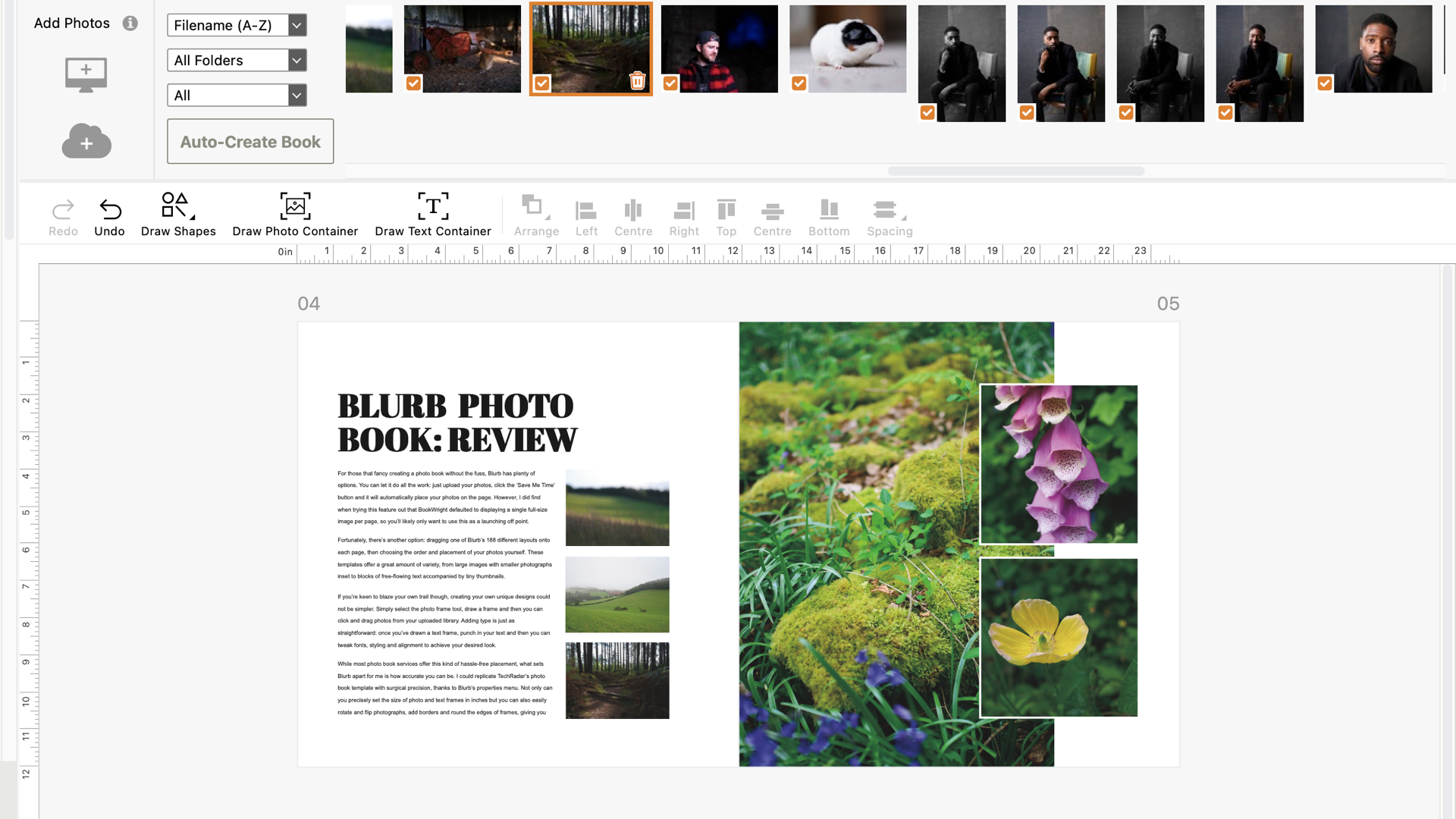
Keen to blaze your own trail? Creating your own unique designs using Blurb is more flexible than pretty much any of the best photo book services. Simply select the photo frame tool, draw a frame, and then you can click and drag photos from your uploaded library.
Adding type is just as straightforward: once you’ve drawn a text frame, punch in your text and then you can tweak fonts, styling and alignment to achieve your desired look. And you can also link text frames together, making it possible to automatically flood text from frame to frame.
While most photo book services offer this kind of hassle-free placement, what sets Blurb apart for me is how accurate you can be. I was able replicate TechRadar’s photo book test template with surgical precision, thanks to the detailed properties menu available when you double-click each element. Not only can you precisely set the size of photo and text frames in inches, but you can also easily rotate and flip photographs, and add borders and round the edges of frames, giving you really precise control over the final look of elements on the page.
On top of this, standardizing layouts and alignments is a breeze. Not only do frames handily snap to each other or to the vertical and horizontal midpoint of each page, but you can also set ruler guides to specific measurements, making it simple to use common alignments from page to page. I also really appreciated the ability to save layouts for reuse – this meant I could easily duplicate arrangements for multiple different spreads, without the hassle of recreating them from scratch.
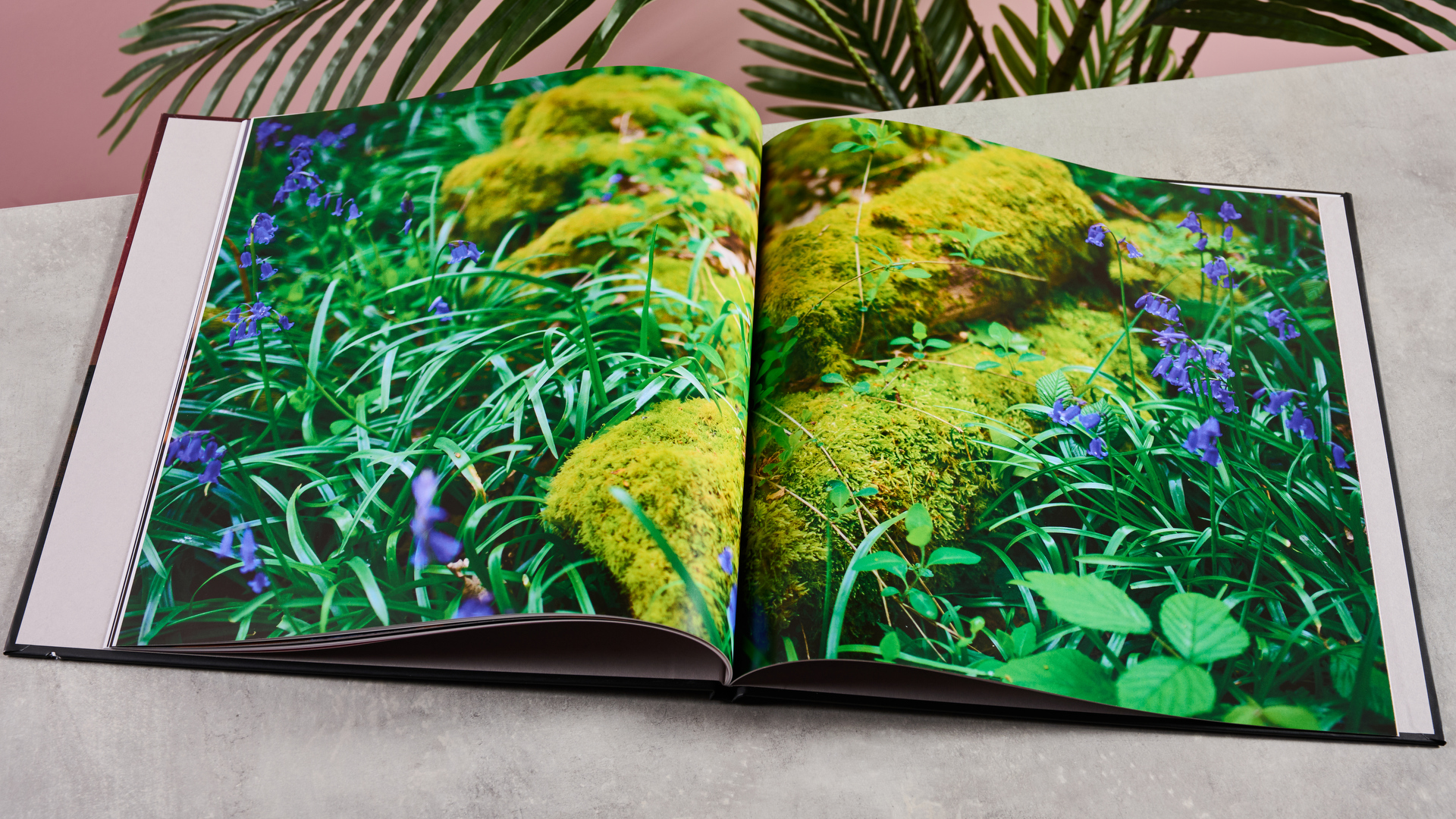
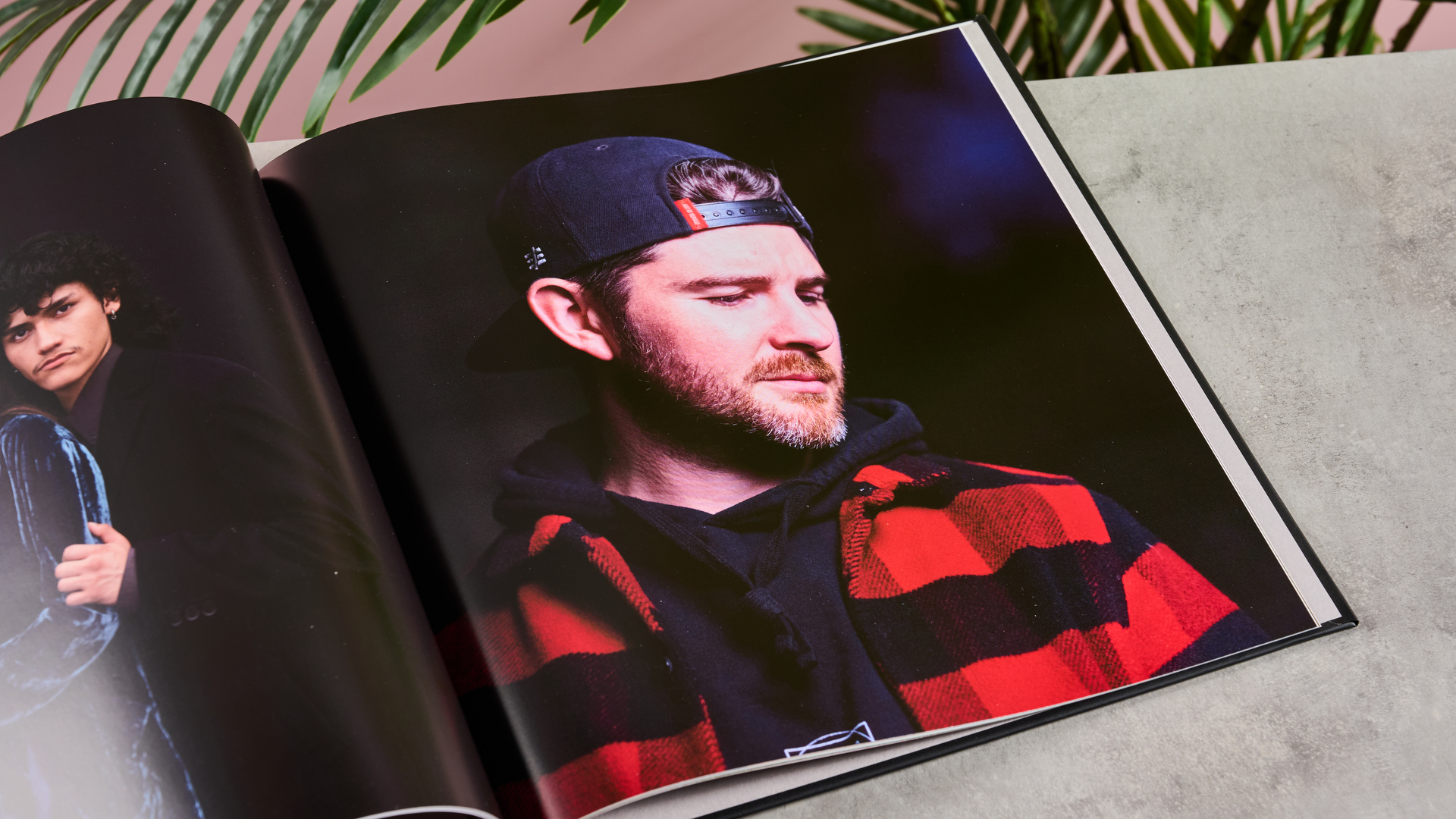
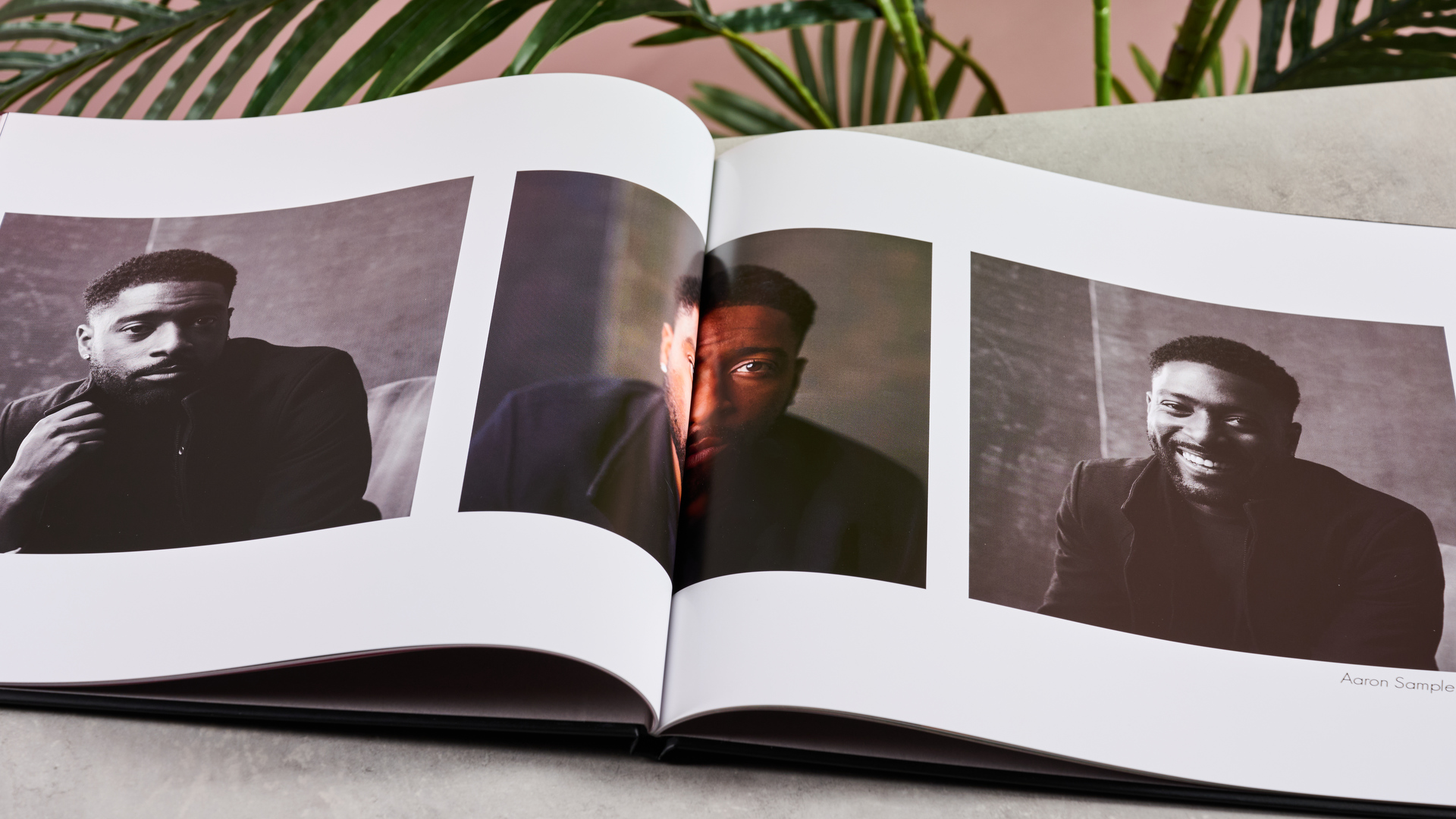
While Blurb doesn’t offer the pages and pages of clip art that some photo book tools do, what it does offer is actually far more flexible than many rivals. Blurb allowed me to create custom shapes with dimensions of my choosing, as well as dialing in precise RGB color values, rather than being limited to a bunch of preset imagery. Sure, it only offers a spectrum of 386 in its color wheel, there's no color picker, and I’d have loved the option to input Hex and CMYK values as well; but Blurb still offers far better precision than many of its competitors.
Once I was done finessing my photo book, all I had to do was click Review and Upload. This runs you through any warnings and gives you a chance to fix flagged issues, as well as running a spell check. That’s a feature not many photo book platforms offer, so it’s a nice additional touch – although its suggestion that I correct ‘TechRadar’ to ‘technocrat’ feels like a level of sass I’m not used to receiving from software.
Colors within were vibrant without feeling like they were oversaturated – the moss on a log has come out in a gorgeous, vivid green, while a shot of an aurora shows off a rainbow of rich pastel hues. The resolution of images also looked exquisitely detailed; for example the bristle of grey hairs in one subject’s beard were incredibly well-defined, adding real depth to the image.
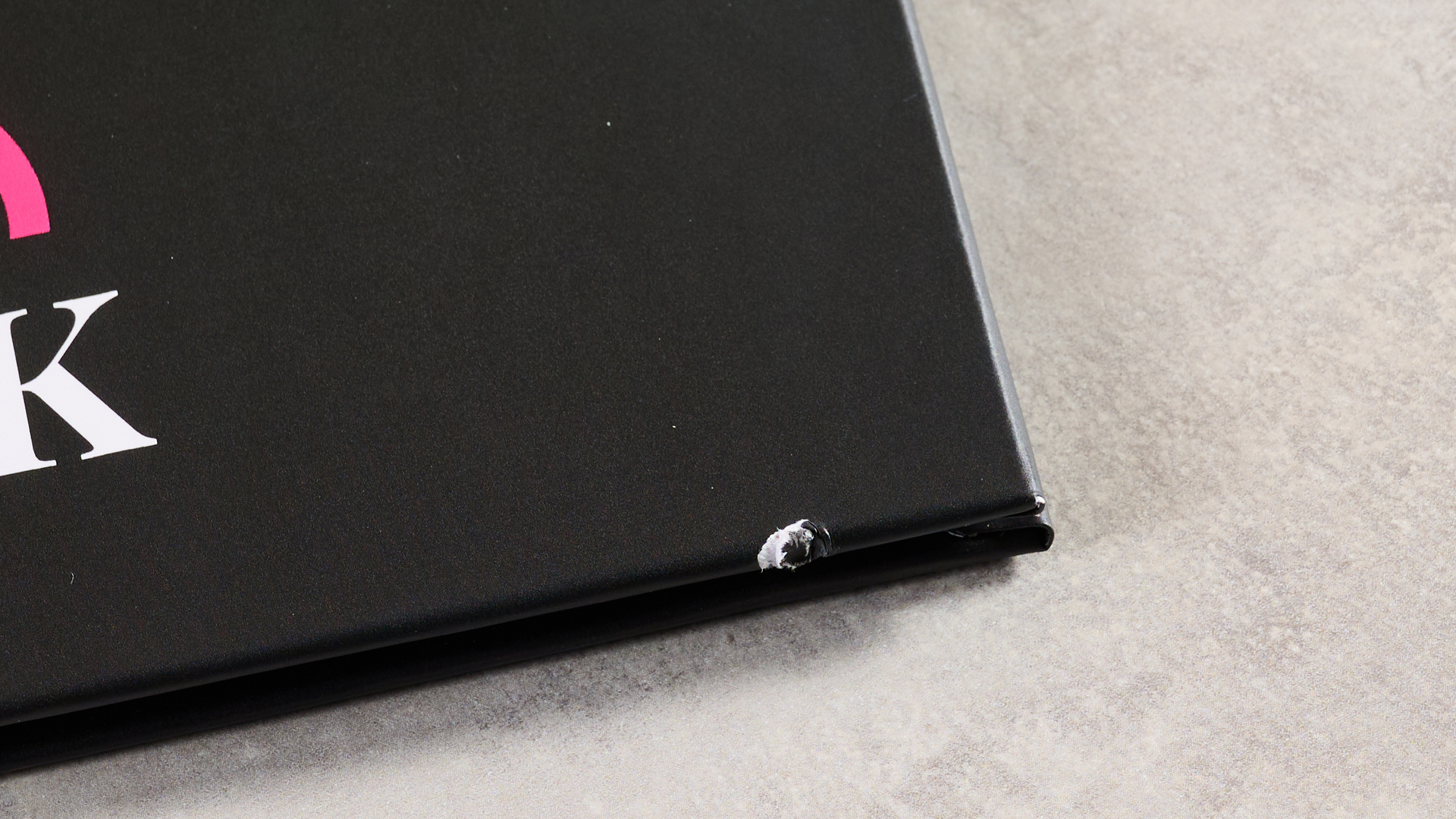
There were few visible print errors either. As you’d imagine from the precision of its tools, alignments looked spot on, with no awkward gaps between frames or ragged corners, and there were no issues with the edges of pages being unevenly trimmed. It is worth noting that my book did arrive with some damage, with an unsightly dent in the front cover. The blame for this probably falls more on the shoulders of FedEx, but I would appreciate some additional packaging to protect books from these kinds of knocks.
But however strong the finished result was, perhaps the most remarkable thing about Blurb’s photo book was how reasonably priced it was. Setting aside the eye-watering delivery costs for the Australian market, the $80.72 / £50.76 / AU$99.44 plus $6.99 / £8.99 / AU$71.49 price for our sample was much cheaper than the $130 (around £100 / AU$200) cost charged by Shutterfly or $145.78 (roughly £112) charged by Printique. That’s a very decent price to pay, particularly in light of the (generally) excellent finish.
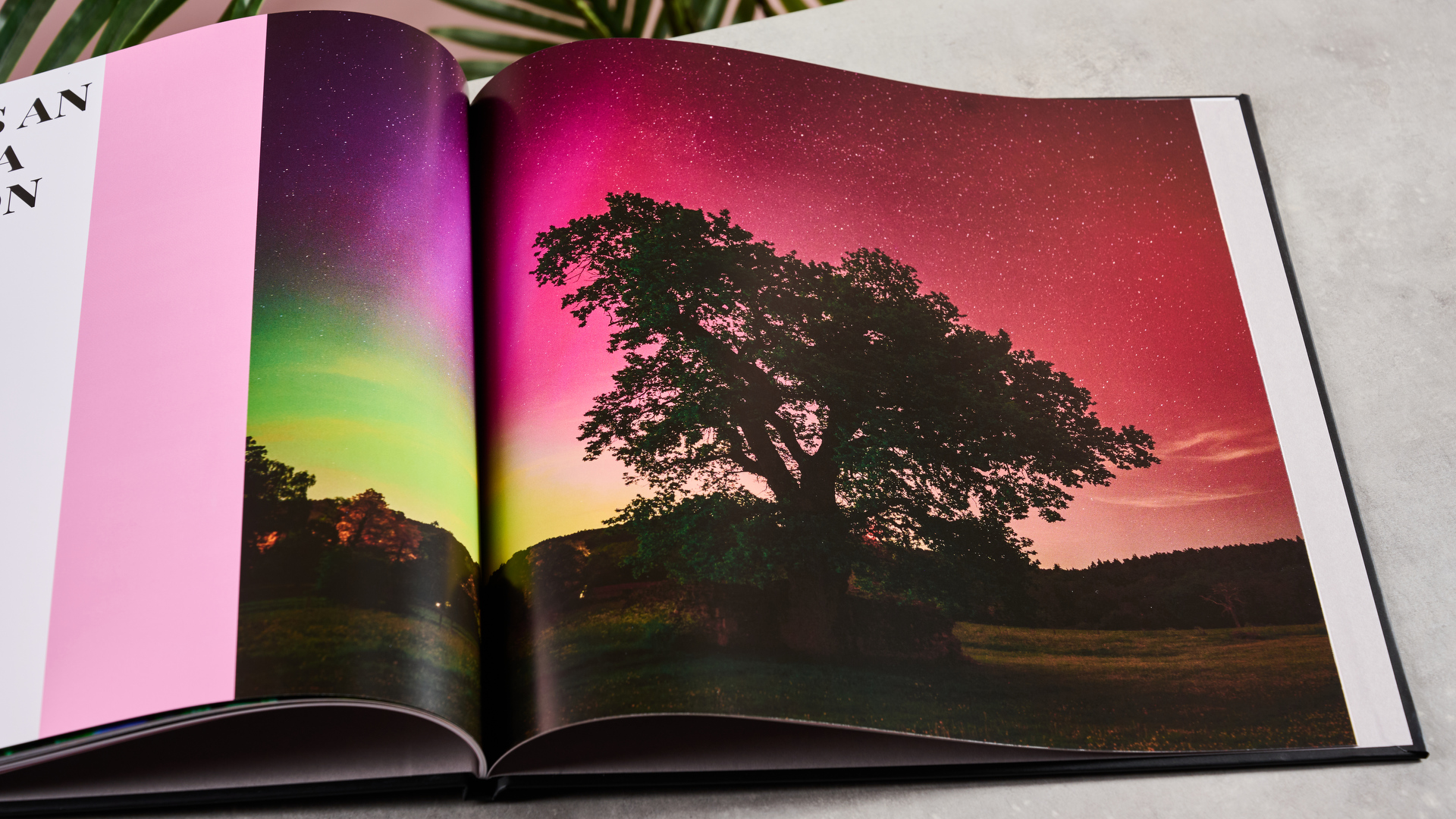
Should I buy the Blurb photo book?
Buy it if…
You want precise, accurate design tools
Blurb’s BookWright software is capable of producing unerringly precise designs – you can manually set precise dimensions for frames, punch in RGB color values, use ruler guides to use the same positions from page to page. Alternatively, if you’re a design pro, you can create your own book from scratch in Adobe InDesign or Lightroom.
You want a top-quality finished photo book
Blurb’s photo books are produced to an excellent standard. Colors are vibrant without looking artificial, the clarity of printed images is genuinely impressive, and there are also no glaring errors with alignment or the margins of pages.
Don’t buy it if…
You want an online solution
Using an app is the only way you can design a book for Blurb’s platform. So if you’re unable to install third-party apps on your computer and don’t have a tablet to design on, you may find it slightly trickier to use the platform.
You want drag-and-drop clip art
Blurb is more focused on precise photo- and text-focused layouts than stock illustrations and flourishes. If you’re looking to decorate your photo book with clip art or pre-formatted aphorisms, it doesn’t have a lot of options.
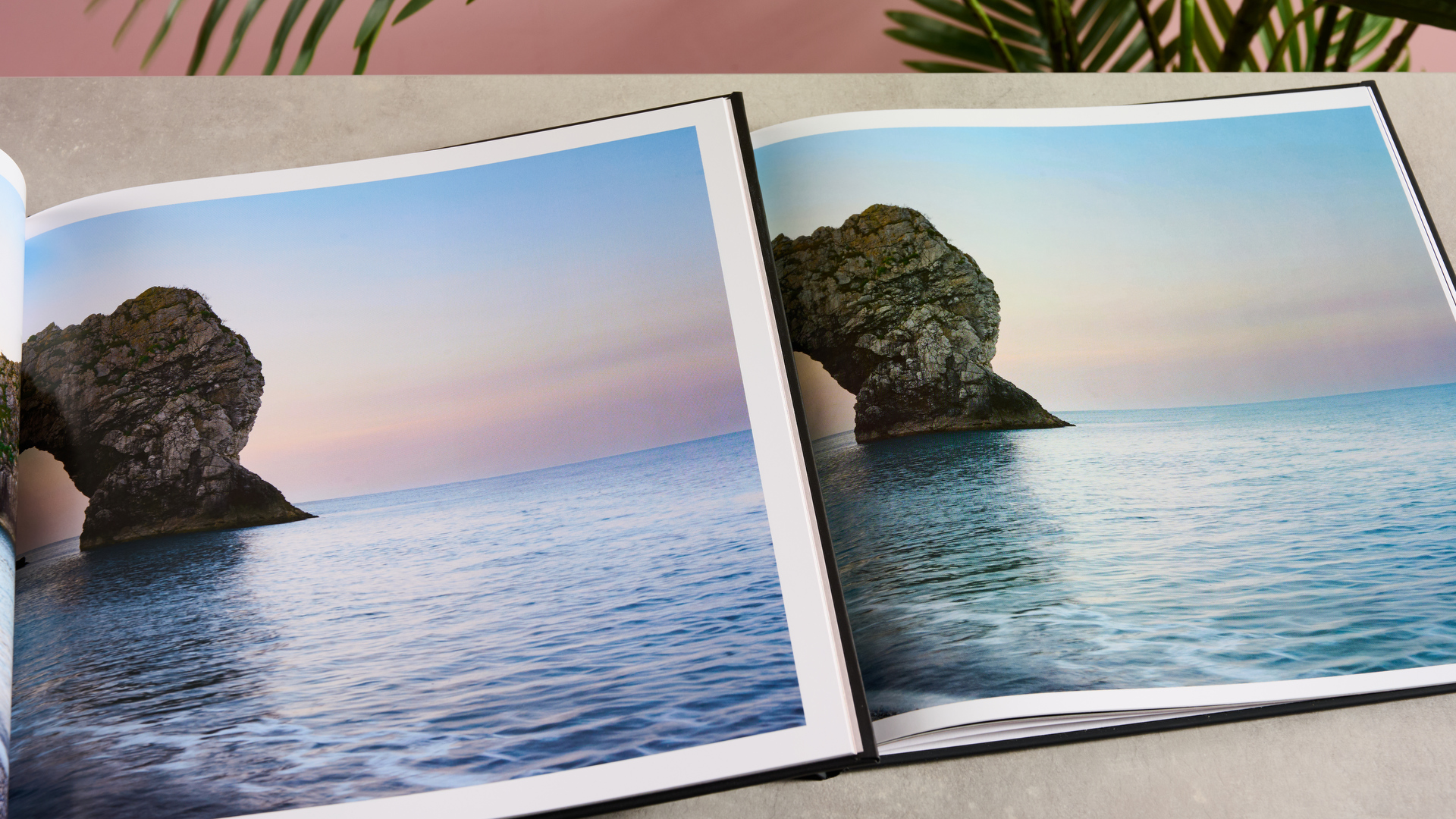
Blurb photo book review: also consider
Printique
Printique is another very solid photo book platform. You can adjust the measurements of elements accurately, and punch in specific color values, and it also offers 88 pre-made themes, making it easier to tailor your photo book to a specific style. One serious caveat though is that it’s significantly more expensive – our 12 x 12-inch photo book cost us $145.78 including delivery (roughly £112), which is almost double the price of Blurb.
Snapfish
If you’re looking for even more of a bargain, Snapfish might well be the way to go. While a 12 x 12-inch 28 page photo book like ours costs roughly the same price, at $84.95 / £46.95 / AU$101.55, Snapfish also offers regular deals of 40% off, which would bring this down to an absurdly low $50.97 / £28.17 / AU$60.93. Unfortunately, Snapfish books don’t have quite as accurate color as Blurb, looking a little duller, and you don't get the ability to set specific values for dimensions or hues. But, if you catch it on sale, it’s still one of the cheapest photo books you’ll find. Read our full Snapfish photo book review.
How I tested the Blurb photo book
- I precisely reproduced TechRadar’s photo book template
- I spent a number of hours trying out layouts and putting the platform through its paces
- I’ve worked in the print and design industries for more than 10 years
TechRadar has a specific photo book template that we try to recreate from scratch using the photo book platform we're testing. When testing out Blurb’s BookWright app, I duplicated this as accurately as possible, copying the exact dimensions of photo and text frames, precisely reproducing the positioning and alignment of elements, and using the exact RGB color values from the original. I also spent multiple hours playing with Blurb's various templates to get a sense of the kinds of layouts that were available.
When the final printed product arrived, I checked it for damage and marks from handling or the printing process. Next, I compared it to the photo book template to see how the colors and alignments compared to the original, specifically looking for any patches of low resolution imagery or inaccurate hues.
In terms of experience, I’ve spent many years taking photographs on both on my Canon DSLR and my iPhone 16 Pro. I’ve also had over a decade’s experience working in print publishing, working on layouts and doing post-production on images, which has given me a keen eye for printing errors and issues with image reproduction.
- First reviewed: April 2025
- Read more about how we test

Josh is Reviews Editor at TechRadar. With over ten years of experience covering tech both in print and online, he’s served as editor of T3 and net magazines and written about everything from groundbreaking gadgets to innovative Silicon Valley startups. He’s an expert in a wide range of products from Spatial Audio headphones to gaming handhelds. When he’s not putting trailblazing tech through its paces, he can be found making melodic techno or seeking out the perfect cold brew coffee.
You must confirm your public display name before commenting
Please logout and then login again, you will then be prompted to enter your display name.
